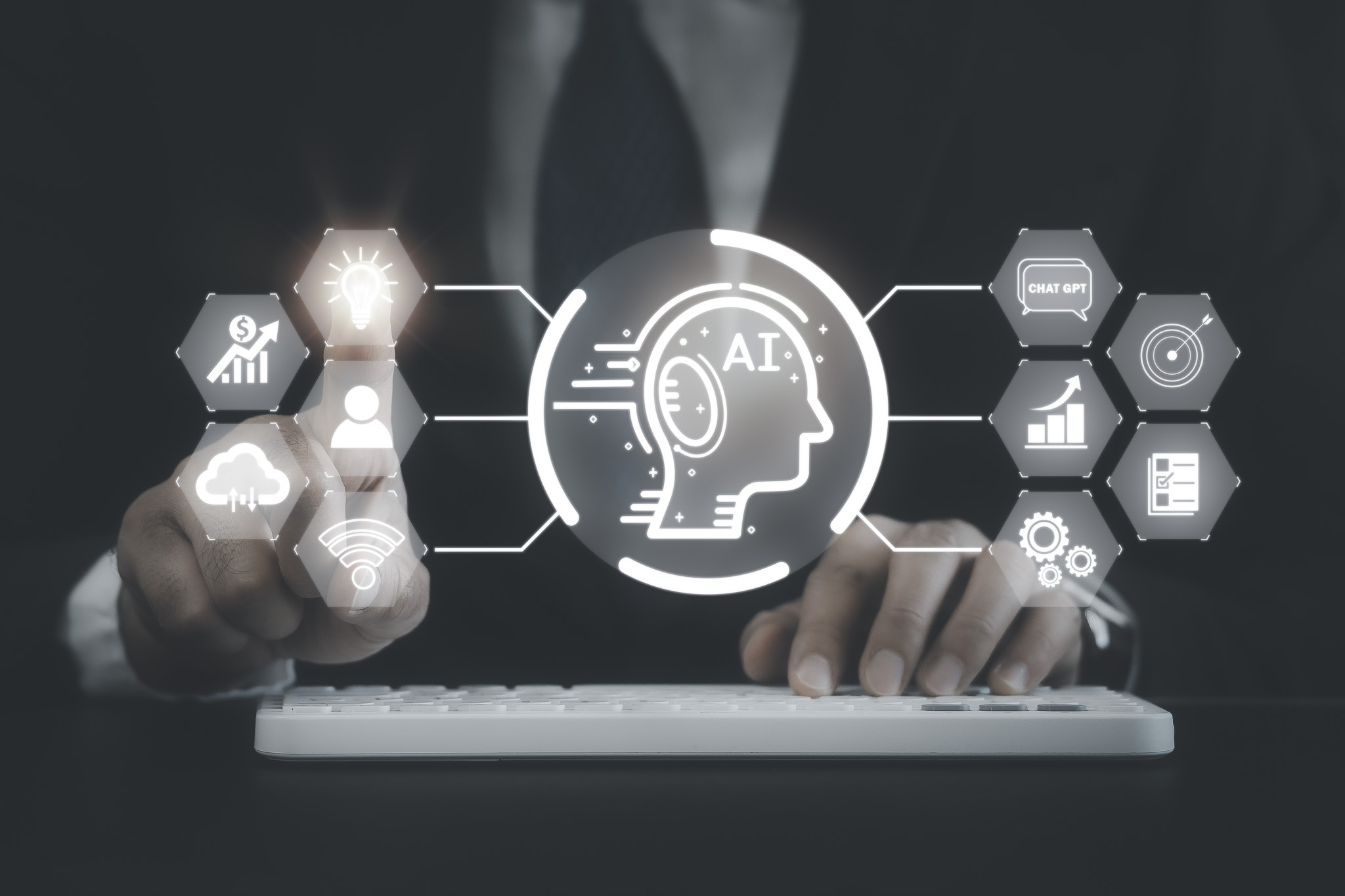This blog post was originally published at Digica’s website. It is reprinted here with the permission of Digica.
Our world is experiencing rapid evolution, particularly in the realm of technology. AI stands out as one of the fastest-growing technologies, capturing the imagination not only of developers and scientists, but also of ordinary people. While science-fiction films and literature often depict AI as a frightening humanoid, this portrayal is pure imagination. Instead, we regularly unwittingly interact today with AI algorithms through activities like web searches, mobile apps and household devices.
We are more familiar with a practical kind of AI that serves as a tool that is capable of reshaping industries and influencing our lives. Fortunately, machine learning brings with it many positive effects, but there are also accompanying risks. How can we best ensure that the rise of AI is not only advantageous, but also guided by ethical considerations?
As machine learning systems become further integrated into our lives, for example, by guiding our decisions and operating autonomous vehicles, numerous ethical concerns arise at each stage of their creation and development. These concerns span responsibilities, security, and even the preservation of human life.
Some countries have proposed legal regulations to address AI applications. In the US, the US Algorithmic Accountability Act of 2022 was introduced, whereas in the European Union, The EU Artificial Intelligence Act serves a similar purpose. Both sets of regulations emphasize transparency, accountability of automated-decision systems, and the mitigation of biases within these systems. The EU regulations also highlight high-risk systems that could impact safety and fundamental rights. Before AI-equipped products are introduced to the market, such products must undergo assessment and ongoing evaluation. These regulations also extend to using generative AI models, like ChatGPT or Midjourney, which must adhere to transparency requirements such as disclosing their AI-generated nature and preventing the generation of illegal content.
The field of AI ethics is evolving continuously, and a wide range of challenges and considerations are emerging. Below I highlight some of the most significant challenges.
Bias and Fairness
During the design process, it is crucial to prioritize the quality of the dataset. The data used to train the model should accurately represent the real-world environment thst the system will operate in. If not, the AI systems could unintentionally adopt any biases present in the data, resulting in discrimination against specific groups and the reinforcement of stereotypes. This issue is particularly significant in domains such as hiring employees, criminal justice and medicine. At this point, we see the challenge that lies in assessing the fairness of such systems. Moreover, in more complex solutions that rely on ensemble models (multiple models that work together), identifying the origins and manifestations of biases within the system can be quite challenging. To mitigate biases, it’s well worth assembling diverse teams of specialists.
At Digica, we place a strong emphasis on the quality of datasets used to train AI models. We employ classical methods, but also incorporate synthetic data to enhance diversity. Furthermore, our team is exceptionally diverse, encompassing individuals from various countries and professional backgrounds, including Computer Science, Engineering, Econometrics, Biomedical Engineering and other professions. I discussed different options for acquiring diverse datasets in my previous article, How to find the best food for your AI model.
One method to ensure fairness involves leveraging eXplainable AI (XAI) techniques, which introduces us to the next challenge.
Transparency and Explainability
AI systems are often regarded as “black box” entities that are intricate and challenging to interpret. In such a scenario, how can designers and users of these systems place trust in them or hold them accountable?
The idea of elucidating the “reasoning” behind machine learning algorithms emerged in the 1970s. As models become increasingly intricate, it becomes more and more difficult to extract the rules governing their decision-making. Additionally, when these models begin to make crucial decisions that impact individuals and society, the need for transparency and explainability becomes paramount. There’s a significant expectation that AI systems should offer clear and comprehensible explanations for their decisions and behaviours. This becomes especially critical to ensure that AI systems are seen as trustworthy, accountable, and aligned with human values.
In the process of constructing AI models, providing explanations for the decisions that these models make can be beneficial not only to developers, but also to Data Scientists. These explanations help developers to determine if the decisions are in line with the model’s ethical standards and legal regulations. Note that Data Scientists might need to grapple with a trade-off between model performance and explainability. As models become more intricate, models might achieve higher accuracy, but become harder to interpret.
Explainable AI (XAI) is a burgeoning field of science that is developing in parallel with new model architectures. Efforts are directed at creating solutions for interpreting the decisions made by models and also at refining methods to present, visualize, and make explanations more accessible to humans. This implies that not only developers and mathematicians, but also users of AI models, are put in a position to interpret these explanations. It is a good example of how diverse fields like Mathematics, AI, and Human-Computer Interactions converge to address a common challenge. In many projects, Data Scientists at Digica employ XAI methods to construct improved solutions and to enhance their understanding of model decisions.
I discussed the significance of applying methods for explainable AI in a previous article, Why is explaining machine learning models important?
Accountability and Liability
When an autonomous system’s model takes decisions, who should be held accountable for those decisions? There’s no straightforward answer to this question due to the multifaceted nature of creating AI systems. Many parties are involved, including organizations, researchers, developers, data providers and end-users. As a result, it remains unclear who should ultimately bear the responsibility. Establishing clear lines of accountability and liability is crucial in order to uphold ethical behaviour, prevent harm and offer recourse for those impacted by errors in AI systems. Note too that AI systems can yield unexpected outcomes, which makes it difficult to predict all the potential scenarios where harm might occur. Balancing the promotion of innovation with the duty to prevent harm presents a challenging dilemma. Navigating this balance is essential to ensure that AI systems bring true benefits to society whilst also minimizing potential risks and negative consequences.
Privacy
In the realm of AI, privacy refers to safeguarding individuals’ personal information, as well as their rights to manage how their data is gathered, processed and employed by AI systems. As AI’s capabilities expand, concerns regarding privacy have taken centre stage in discussions on ethics, human rights and technological progress.
This challenge brings with it numerous issues, such as controlling the flow of personal information, which can be subject to theft or unauthorized access. Furthermore, unregulated data collection and analysis can result in biased outcomes because AI systems might unintentionally use sensitive data to make prejudiced decisions. By prioritizing privacy protection, providers of AI systems can establish trust with users. To maintain privacy, developers can, for example, utilize anonymized data or encryption methods.
Striking the delicate balance between leveraging data for innovation and safeguarding individuals’ privacy rights poses a significant ethical dilemma. Legislative measures like the EU’s General Data Protection Regulation (GDPR) and similar global regulations underscore society’s recognition of privacy’s significance in the digital era.
One of Digica’s projects was related to removing personal health data from medical images. This initiative was crucial for various reasons, given the sensitivity of Personal Health Information (PHI). Legal regulations required the removal of PHI from all sources. Moreover, this data was utilised in other systems, such as medical diagnoses, and failing to remove it would have exposed it to risks like data leakage or PHI misuse.

Autonomy and Control
As AI systems advance in capability, a growing apprehension revolves around determining the extent to which such systems should possess decision-making authority, particularly in vital domains like autonomous vehicles or healthcare. Achieving the right balance between human control and AI autonomy presents a substantial ethical challenge. The interplay between autonomy and control stands as a pivotal ethical consideration as AI technologies progressively become more adept and deeply integrated across various aspects of society.
This challenge is significant because, with appropriate control over autonomous systems, the risk of detrimental decisions with negative repercussions for individuals and society is minimized. Additionally, upholding a certain degree of human control allows for a more distinct assignment of responsibility when AI systems make errors or exhibit biased behaviour. Of course, where there is some human control over autonomous systems, then decision-making speed is reduced. This underscores the essential nature of striking the appropriate balance. Another issue arises when AI encounters unfamiliar scenarios or unforeseen cases that were not part of its learning process. Predicting the decisions that AI will make in such instances is challenging. In these situations, human decision-making can offer assistance and contribute to refining the behaviour of future systems.
Extending excessive autonomy to AI systems raises concerns about eroding human control over critical decisions that impact individual lives. This scenario poses significant risks, particularly in fields like defence or medicine. Highly autonomous AI systems might display behaviours not explicitly programmed, raising ethical concerns if these behaviours are harmful or biased. In such contexts, it is imperative to implement mechanisms that enable human intervention and provide the ability to override AI decisions in high risk circumstances.
Economic Impact
AI and automation have the capability to transform industries and the job market, potentially resulting in job displacement within certain sectors. Ethical considerations encompass ensuring a fair transition for affected workers and devising methods to equitably distribute the advantages stemming from AI-driven productivity.
By using the positive advantages of AI, we can significantly increase productivity. AI’s capacity to handle repetitive tasks allows individuals to concentrate on more intricate and imaginative endeavours. AI-powered solutions foster increased innovation and competitiveness in the market, effectively stimulating economic expansion. The automation facilitated by AI can lead to cost reductions in processes in domains like manufacturing, customer support and supply chain management.
On the other hand, because AI can carry out many manual tasks, there is also a risk of displacing certain jobs, particularly where AI outperforms human abilities in terms of efficiency and speed. The economic gains from AI might not be evenly shared, which may exacerbate income disparities between highly skilled AI professionals and those in less technical roles. This disparity could intensify economic inequalities within and across nations. In such circumstances, collaborative efforts involving governments, industries, academia, and civil society are crucial.
Security and Robustness
AI systems can be open to attacks in which minor alterations to input data can lead them to making erroneous decisions. Ensuring the security and resilience of AI systems is therefore vital, especially in applications where safety is critical. Addressing this concern should be integral to the design process of AI systems. Additionally, regulatory frameworks can play a role in enhancing security.
Environmental Impact
The environmental consequences of AI refer to the effects that the development, deployment and utilisation of artificial intelligence technologies have on the ecosystem. As AI technologies grow in complexity and capability, they often demand substantial computational resources, raising concerns about energy consumption, carbon emissions and their impact on climate change.
Training advanced AI models, particularly large-scale deep learning models, requires significant computational power and energy, which results in using substantial energy during the training phase. For instance, ChatGPT’s carbon dioxide emissions have been estimated at 8.4 tons per year.
AI systems commonly rely on data centres for data processing and analysis. These centres consume a considerable amount of energy to maintain the required computational infrastructure. Despite advancements in energy efficiency for hardware, the demand for computing power by AI technologies has fuelled the development of larger and more energy-intensive data centres.
As AI technologies evolve, it’s imperative to consider their ecological implications and to ensure that advancements align with environmental sustainability.

Long-Term Implications
Speculative concerns about AI’s long-term impact on society, including the potential for superintelligent AI, raise intricate ethical questions about humanity’s future and the risk of losing control. Worries centre around a loss of control if such systems were to surpass human powers of intelligence. The emergence of superintelligent AI could, for example, disrupt power dynamics, influencing politics, society and the economy.
To address these ethical challenges, we need a multi-stakeholder approach involving researchers, policymakers, industry experts, ethicists and general society. This collaborative effort aims to shape the development and deployment of AI technologies in alignment with human values and society’s well-being.
AI’s long-term implications push the boundaries of our current ethical framework and call for a balance between technological progress and thoughtful consideration of potential consequences. While these implications remain largely speculative, proactive ethical discussions and foresight can guide AI development towards a future that upholds human values, ensures safety and contributes positively to humanity’s welfare.

Conclusion
In the complex domain of AI ethics, only one thing is clear, which is that the journey is ongoing. The challenges outlined in this article underscore the fact that AI’s development is a matter that generates novel ethical complexities that go to the root of defining today’s societies across the globe.
As we navigate the intricate ethical landscape of AI, let us recognize that, while the challenges are extremely complex, the potential for positive transformation is boundless. Through meaningful dialogue, collaboration and a steadfast commitment to a future that incorporates ethical considerations, AI solutions can become a catalyst for benefit to society, inclusivity and human advancement.
Joanna Piwko
Data Scientist, Digica


